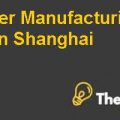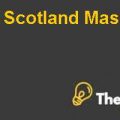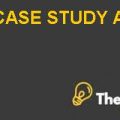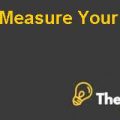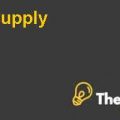Introduction
Alfa Collar was originated in 1960.The company is engaged in selling synthetic resins to a larger customer base. Thecustomers of the company purchasing synthetic resins (powder and liquid form) are the large industries. The synthetic resins can be used through casting process or injection in order to make numerous products.The leather industries also tend to spread them to manufacture synthetic leather which is being manufactured by the company while others use them for melting them in the water and solvent for adhesives, paints and various similar products.
Alfa has a large variety in its product line and the number of employees working for the company is 350.Moreover, the combined turnover of the company is 200 million Euros. The foremost purpose and concern of Alfa Collar is to evaluate the economic advantage of the choice of acquisition.
Problem Statement
The Collar Company’s investment bank has intended to sell the company, thus Alfa would most likely exploit the opportunity by acquiring the company. The acquisition could become one of the most effective or one of the worst decisions for the company. In order to better predict the usefulness of the acquisition in the forthcoming years, Alfa needs to evaluate whether the proposed decision would prove to be unfortunate for the company or it has prosperous future ahead.
Alfa Collar Harvard Case Solution & Analysis
Analysis
Value of Collarfor Alfa without Synergy
The value of Collar is derived for Alfa without imagining any synergy between the companies.To take a look over the value of Collar in the current situation, synergies are calculated at Euro 54.228 Million.This is further illustrated in the graph below:
| Unlevered Cash flow | 2-3 % Growth | 1.1 % - Inflation - Banca de Italia
|
|||||||||||
| 2003 | 2004 | 2005 | 2006 | 2007 | 2008 | 2009 | 2010 | 2011 | 2012 | 2013 | |||
| Operating Income (EBIT) | 3,896 | 4,026 | 4,289 | 4,336 | 4,384 | 4,432 | 4,481 | 4,530 | 4,580 | 4,630 | 4,681 | ||
| add : Depreciation | 1,092 | 1,210 | 1,200 | 1,213 | 1,227 | 1,240 | 1,254 | 1,267 | 1,281 | 1,296 | 1,310 | ||
| Earnings | 4,988 | 5,236 | 5,489 | 5,549 | 5,610 | 5,672 | 5,735 | 5,798 | 5,861 | 5,926 | 5,991 | ||
| Tax @ 43% approx. | 1,411 | 1,492 | 1,649 | 1,865 | 1,885 | 1,906 | 1,927 | 1,948 | 1,969 | 1,991 | 2,013 | ||
| After tax Earnings | 3,577 | 3,744 | 3,840 | 3,685 | 3,725 | 3,766 | 3,808 | 3,850 | 3,892 | 3,935 | 3,978 | ||
| WACC @ 7.17% | 0.933 | 0.871 | 0.812 | 0.758 | 0.707 | 0.660 | 0.616 | 0.575 | 0.536 | 0.500 | 0.467 | ||
| Discounted Cash flows | 3,338 | 3,260 | 3,120 | 2,793 | 2,635 | 2,486 | 2,345 | 2,212 | 2,087 | 1,969 | 1,857 | ||
| Terminal Value | 27,984 | ||||||||||||
| Present Value – “000” | 54,228.52 | ||||||||||||
The terminal value is calculated by using working capital and free cash flow components with WACC at 7.17% and a 0.5% terminal increase of the cash flows in perpetuity. The discount rate is also assumed to calculate value of an investment when the time period comes to end with the interest rate.
Calculation of WACC can be further analyzed by looking at the calculation below:
| Calculation of WACC | |||
| Risk Free Rate | 4.58% | ||
| Market Risk Premium | 4.75% | ||
| Beta Coefficient: | |||
| Unlevered Industry Beta (average) | 0.495 | ||
| Re-ear using Collar’s data | |||
| Market Value of Equity | 23289 | ||
| Market Value of Debt | 4200 | ||
| Equity Beta | 0.546 | ||
| CAPM / WACC / KE / Cost of Equity | 7.17% | ||
| Note: For Unlevered Cash flows, WACC is equal to the Cost of Equity. | |||
This is just a sample partical work. Please place the order on the website to get your own originally done case solution.


